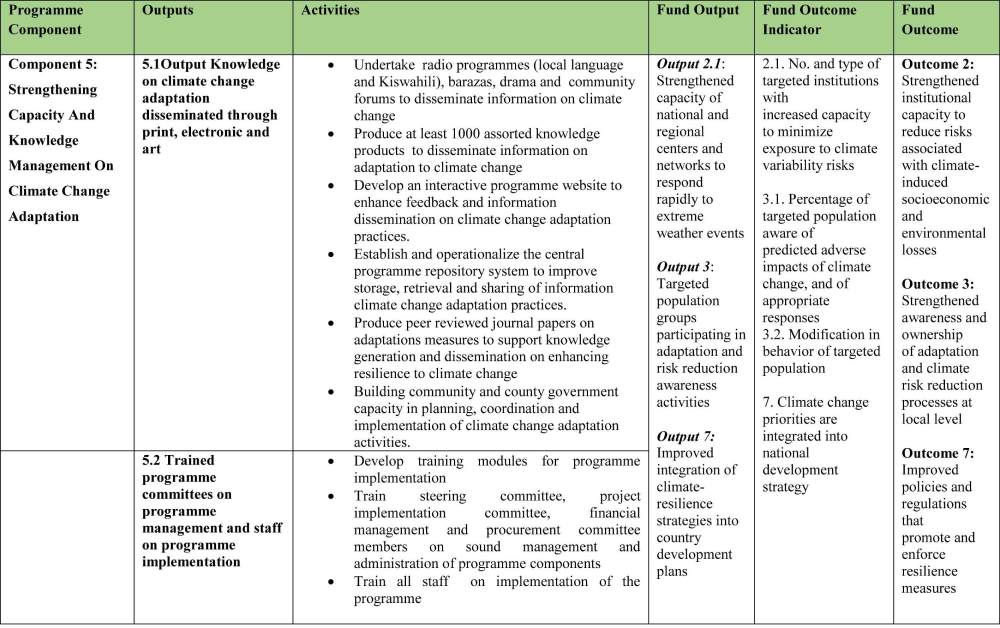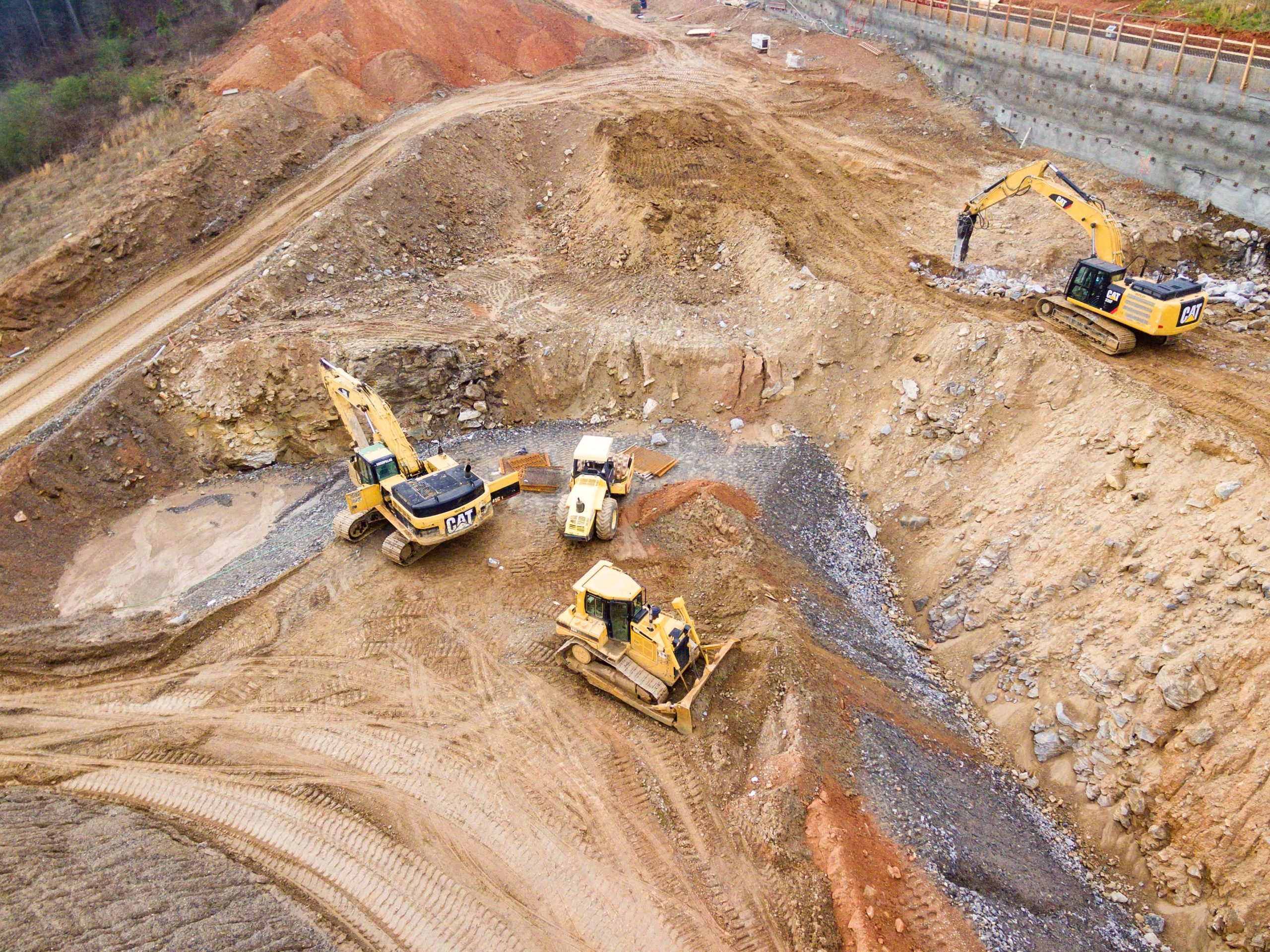Component 1 – Enhancing Climate resilient agricultural, agro-forestry, pastoral and agro-pastoral production systems to improve food security in selected Counties in Kenya.
The communities in rural areas mainly depend on rain fed agriculture and pastoralism for food and sustainable livelihood. Effects of climate change greatly impacts on these natural resources leading to food shortages and death of livestock. The programme therefore promotes suitable farming practices and methods to improve both livestock and crop based production within households. The programme has six 6 outputs
Key Result Areas
3000 farmers groups working with drip irrigation
15,000 farmers achieving 25% average increase in food production per Ha.
15,000 House Holds with a 25% increase in food consumption.
30% reduction in negative coping strategies
48,000 drought tolerant fruit trees seedlings planted by farmers
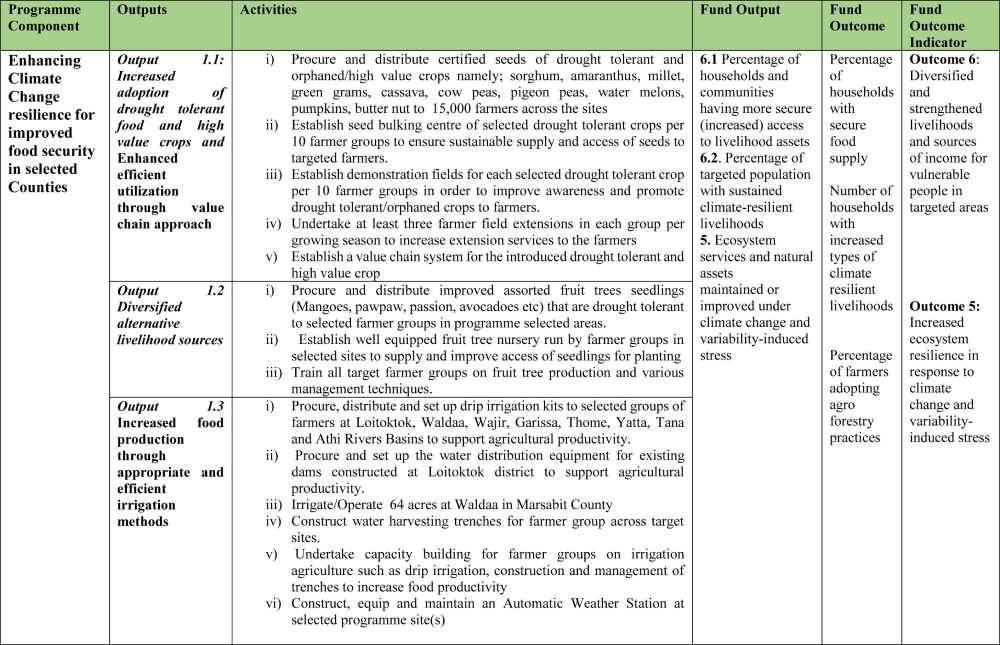
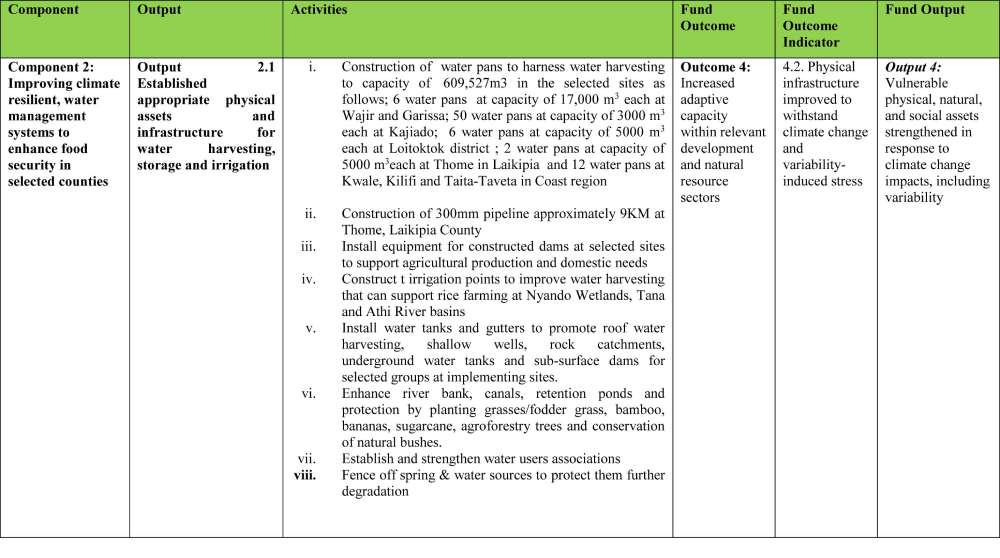
Component 2: Improving climate resilient water management systems to enhance food security in selected Counties in Kenya
The effects of climate change have led to prolonged drought , erratic rainfall drying of wetlands, seasonal rivers and water springs. This has affected several sectors such as agriculture , livestock and industries. The programme through this component focuses on adaptation activities that will improve water resources to support other sector economies.
Key result areas
- Construction of 2 irrigation schemes (Laikipia and Masinga)
- 609,527 M3 capacity water harvesting structures constructed
- Construction of 300mm pipeline approximately 9km.
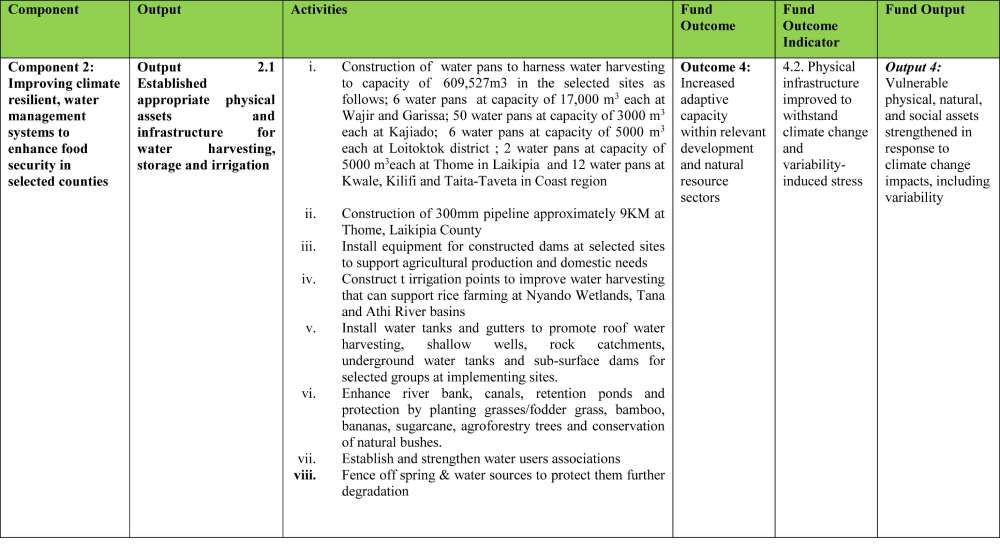
Component 3: Increasing resilience to the effects of rise in sea level and shoreline changes through Integrated Shoreline and Mangrove Ecosystem Management at Vanga and Gazi in the Coastal region of Kenya
The coastal and marine ecosystems are rich with natural resources which support local and national economies which include fisheries coastal forests mangrove forests seagrass beds , coral reefs , river basins deltas and estuaries , beaches and sand dunes as well as cultural and natural heritage. The climate change effects has impacted on the coastal areas leading to rise in sea levels , coral reef bleaching and destruction of mangrove due to flooding and drought. The programme is communing up with a sea wall to protect human settlements . This will be combined with magroove restoration to protect the shoreline. To address the challenge of coral bleaching the programme is rehabilitating the coral reefs.
Key result areas
- Stabilize at least 4.81 km of the Vanga Shoreline
- Secure at least 3,579 households from the effects of sea level rise and shoreline changes in Vanga
- Rehabilitate at least 2,815 Ha of the Vanga and Gazi Mangrove Ecosystems
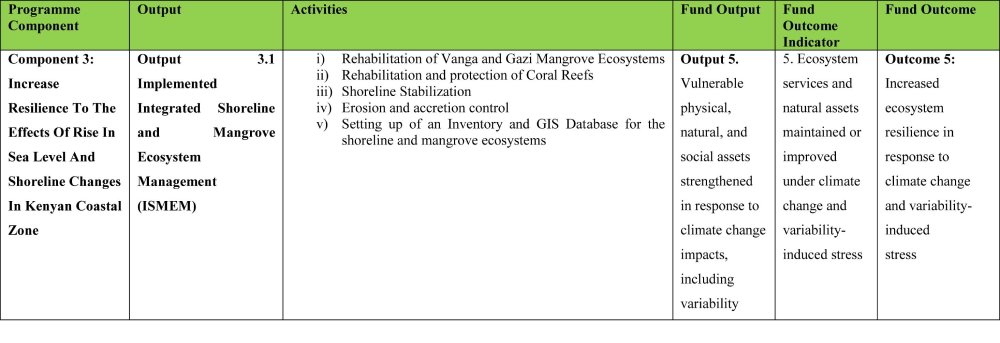
Component 4 :Disaster risk reduction among targeted vulnerable communities for climate related risks in Kenya
The level of preparedness for climate change related risks such as flooding , erosions loss of livestock, prolonged drought and crop failures is very low and weak in the country . There has been frequent occurrences of these scenarios due to effects of climate change leading to loss of property ,lives and destruction of infrastructures among others. The programme seeks to address the challenges through establishment of early warning systems and construction of automatic weather stations , establish community based friendly information dissemination sytems , establish evacuation centres and construction of flood control structures.
Key Result Areas
- Construction of Dykes in four identified sites along River Nyando
- Construction of flood control structures in the Yala basin (10 Km stretch)
- Construction of 4 evacuation Centers
- Developed system of sending disaster alerts
Component 5 : Strengthening institutional capacity, knowledge management, awareness raising and promotion of adaptation mechanisms to improve resilience on climate change to selected vulnerable communities in Kenya
The component has been designed as a knowledge management humb to share information and best practices in climate change adaptation.
Key result Areas
One empirical research study
Information Education Communication (IEC) materials developed and distributed
12 Radio talk shows on Disaster Risk Reduction
Web portal for interactions
One database for documentation of programmer implementation processes
One Documentary developed for the programmer
1 Policy makers, ministerial training
10 farmer exchange field tours
One conference to profile disseminate best practices
